Childbirth in the water - a fashion trend or a natural way of delivery, undeservedly forgotten by women? The article will tell you about the advantages and disadvantages of deliveries in the water, about who is allowed and to whom these unconventional methods are strictly contra-indicated.
Contents
- Natural childbirth in the water. Is it worth it to give birth in the water?
- What kind of labor in the water is better than ordinary birth?
- Video: childbirth in the water
- Are births in the water harmful?
- Features of genera in water
- What equipment is needed for delivery in water?
- How to prepare for delivery in water?
- Childbirth at home in the water: how is the process of giving birth in the water?
- Video: Woman giving birth at home in the bathroom
- Birth of a child at home in the water: how do newborns born in water behave?
- Video: Newborn baby in the water
- Childbirth in the maternity hospital: is it real?
- Waterbirth at home: advice and feedback
- Video: Dr. Komarovsky about childbirth in the water
Childbirth in the water is unconventional for the women in labor in post-Soviet countries and the way of delivery that is customary for women abroad. From ordinary births they differ in that during fights a woman periodically plunges into a bath or pool with water, and at the moment of the appearance of the child it is always there that the baby immediately finds himself in the aquatic environment.
You can give birth in water as in a specialized clinic where you have all the necessary equipment and trained personnel, and at home - with a midwife, in your bathtub or a specially installed inflatable pool.
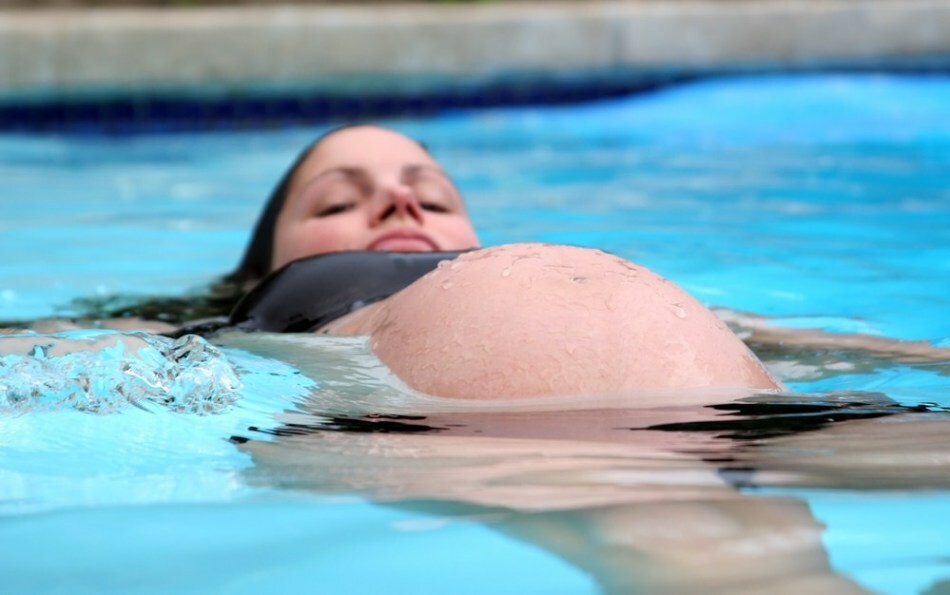 Water helps a woman relax and relieves pain
Water helps a woman relax and relieves pain Natural delivery in water. Is it worth it to give birth in the water?
To decide whether it is worth giving birth in water, you need to think carefully and weigh all the pros and cons of this kind of delivery. Strictly contraindicated in the water in women with weak health, a narrow pelvis, pathological pregnancy. If the fetus is too large or there is a threat of hypoxia, it is also better to refrain from waterbirth.
If there are no obvious contraindications for deliveries to the water, the woman needs to prepare in advance for them: determine where they will be conducted and find a doctor with experience in conducting similar births.
 A woman can give birth in water if she does not have any contraindications to this.
A woman can give birth in water if she does not have any contraindications to this. What kind of labor in the water is better than ordinary births?
Advantages of childbirth in the water before traditional birth:
- shortened time of fights
- relaxation of the muscles of the hips, back and abdomen
- the woman practically does not feel pain during fights
- decreases the likelihood of ruptures, as the vagina becomes more elastic and at the same time resilient
- all the movements of the parturientin water smooth and accurate, which allows it to occupy the most comfortable poses during labor and delivery of
- in water, blood pressure does not "jump" and does not exceed the normal values of
- .the water flowing into the water is immediately washed with blood and mucus.
- the child smoothly passes from one environment to another, without sudden changes in temperature, light brightness and noise level.
 Contractions in water are less painful.
Contractions in water are less painful. IMPORTANT: Despite the obvious benefit of giving birth in water, this practice isunder the ban in many countries because of the existing danger to the mother and child.
Video: childbirth in the water
Are births in the water harmful?
It is not necessary to deny the naturalness of childbirth in the water, because all nine months from his conception to birth the child spent exactly in the water. However, in addition to benefit and relief, aquatic births can harm the health of the mother and child, namely:
- the child can take his first breath still under water, which is fraught with the development of pneumonia
- urgent use of medicines under the water is impossible
- in the water disrupts the heat transfer process
- aggressive microbes of tap water can be times more dangerous than any hospital microbes
- if the mother does not leave the bath before the afterbirth, water can get into the blood
- in warm water after 3 hours is the E. coli, which actively multiplies and poses a threat to both the mother and the baby
- water midwife may not immediately recognize the onset of bleeding
- fetal heart beat hard to listen when a woman is in the water
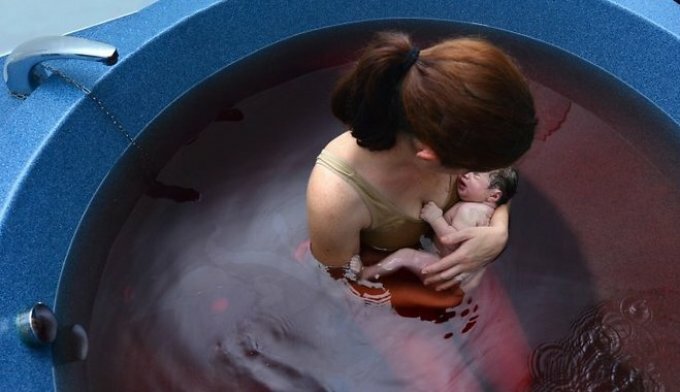 Rapid multiplication in water of microbes can threaten the health of the mother and child
Rapid multiplication in water of microbes can threaten the health of the mother and child IMPORTANT: In addition to the listed dangers, there are certain inconveniences associated with the organization of labor: the need for every 2 -3 hours to change the water, as it very quickly cools down and the difficulty for the doctor, who can not fully control the process.
Features of the genera in the water
The popularity of the genera in the water is explained by the fact that the parturient woman does not experience such pain and stress during them as during usual births. To pursue painlessness did not turn into a tragedy, a woman must fully understand the difficulties she might face in the process of delivery.
First, if complications arise, the provision of medical care will be difficult. In the water, no medicines to add do not make sense, and it may take a lot of time to extract the mother in the bath from the bathroom and transport it.
Secondly, you need to be prepared for the fact that the tactics of giving birth may need to be changed. As soon as the woman in labor feels discomfort, malaise or panics, the doctor who takes delivery will immediately ask her to leave the bath to continue the process under the traditional conditions.
IMPORTANT: In order for labor to be successful, a woman must be prepared. For this, from the first weeks of pregnancy, she needs to attend special courses and perform exercises in the pool, recommended by a doctor.
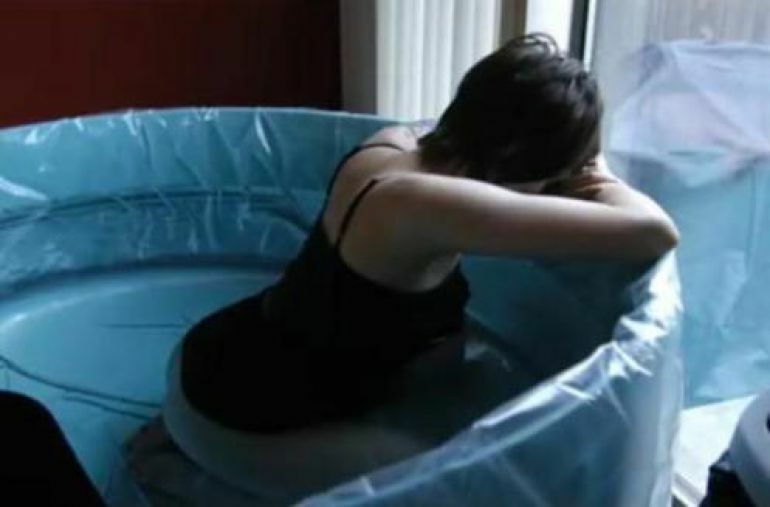 If something goes wrong during delivery, it will be difficult to help a woman in childbirth quickly
If something goes wrong during delivery, it will be difficult to help a woman in childbirth quickly What equipment is needed for delivery in water?
For delivery in water, first of all you will need a bath or a swimming pool, where these same births will occur. When women decide to give birth in the water at home, for this purpose they usually plan to use a regular bath.
However, this is wrong. The dimensions of the container for delivery in water should be more than 2200 mm in length and 600 mm in depth. Such dimensions will provide the woman in labor with comfort and the opportunity to take the desired comfortable pose. Pools and baths of the necessary sizes are available in specialized maternity homes. There you can rent them for home delivery.
IMPORTANT: Water for delivery can be either the most common tap or cleaned. But the preference is still given to water that has undergone multi-level processing or filtration. Add sea salt to the prepared water.
In addition to the bath you will need a water thermometer. Even a slight decrease in degrees should be a signal for immediate regulation of the water temperature.
To support the woman's head, a special rubberized pillow will be needed, and for quick cleaning of the faeces, if they are separated, prepare a plastic container in advance.
The rest of the equipment that can be useful when giving birth in water is exactly the same as equipment for traditional births. It is always in the arsenal of a doctor in a hospital or a home midwife.
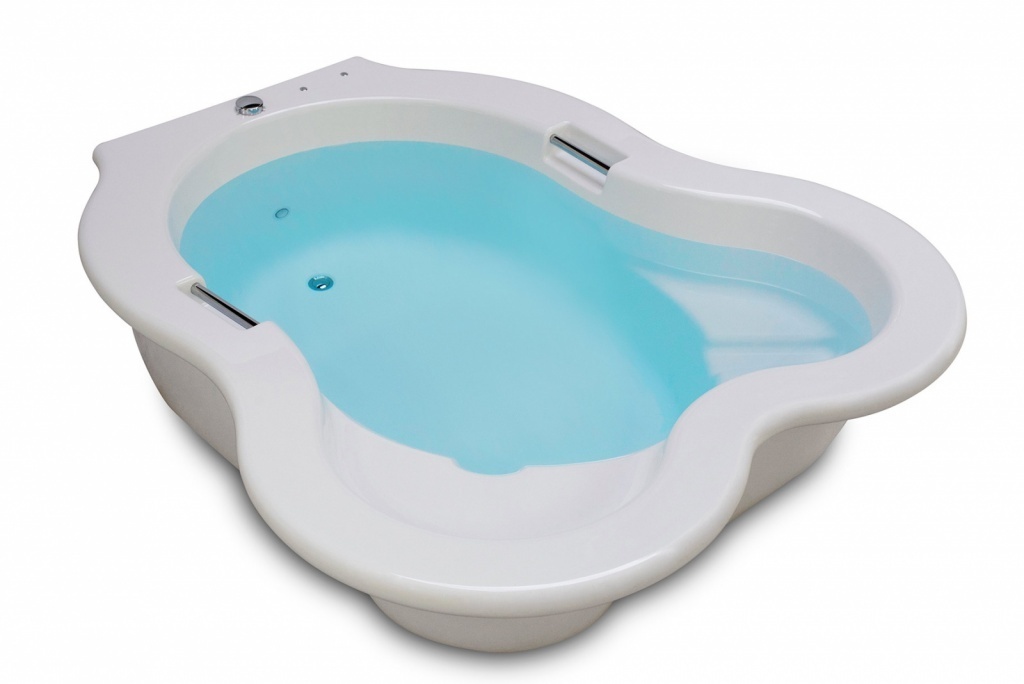 For delivery in the water you need a large bath
For delivery in the water you need a large bath How to prepare for delivery in water?
Preparation for childbirth in the water begins with attending courses in which prospective mothers are informed about the advantages and disadvantages of this type of delivery. When a woman understands what she is going through and realizes all the risks, there is more hope for a successful outcome of such births.
Physical training consists in the regular performance of exercises for pregnant women in the pool or natural body of water. This helps the body to get used to the aquatic environment.
 Exercising gymnastics for pregnant women in the pool - one of the stages of preparation for delivery in water
Exercising gymnastics for pregnant women in the pool - one of the stages of preparation for delivery in water If household deliveries are planned in the water, it is necessary to establish in advance in the separate room the swimming pool in which they will occur. The future mother needs to get used to it in advance, try to move in it.
If the room is very hot or very cold, it is necessary to install equipment that can correct the air temperature at the right moment( it should not exceed 22 ° C and not be lower than 21 ° C).
IMPORTANT: Prepare a largethe number of towels and cotton napkins to wipe the baby dry as soon as it is removed from the water.
Childbirth at home in the water: how is the process of giving birth in the water?
Home births in the water begin, like any traditional birth, with fights. When a woman feels the first contractions, she calls a doctor or midwife( dole), who will help her in childbirth. After the doctor examines the woman in childbirth and determines the disclosure, a woman can begin to prepare for childbirth.
IMPORTANT: Home births in the water can take place in the family circle - with the participation of a husband or other close relatives of the mother in childbirth.
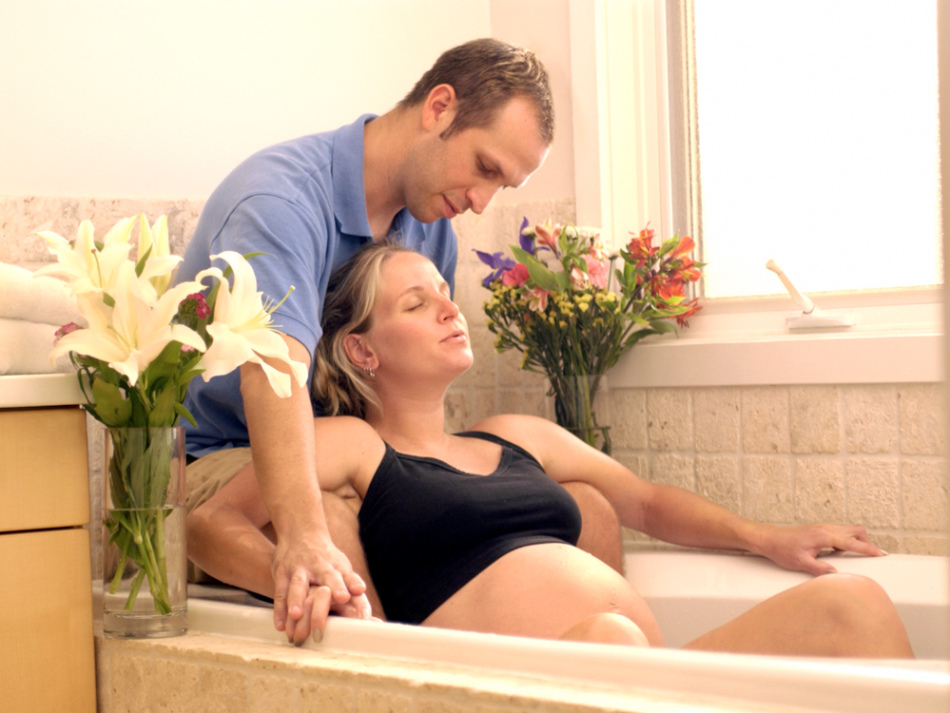 In the process of home births, relatives of
In the process of home births, relatives of can enter the water. At tangible fights, a midwife helps a woman move into a bath of water to relieve the condition. She shows the best poses and teaches the woman in the right position to breathe properly in the fight. The temperature of the water in the bathroom should be controlled, and the water itself should be replaced periodically.
IMPORTANT: For home births in bouts and attempts, a husband can support a woman, massage her and even dive into the bath herself.
When a child appears in the water, it is often left there for 10 to 30 seconds. The baby can swim or lie motionless, the main thing is that during this time the umbilical cord remains whole. After the midwife removes the baby from the water, his body is dipped with dry clean napkins and is first applied to the mother's breast.
 The child was born in the water
The child was born in the water Then the midwife discharges the water, and is preparing to take the latter, which is born some time after the baby. The placenta that has appeared is transferred to a glass container and left for several hours for the whole cord blood to pass over to the baby. After that, the umbilical cord is cut and the umbilical wound is treated in a newborn.
The child is taken away and taken to the room, and my mother is helped to get out of the bathroom gently and move after the baby. In the room the woman in labor is examined by a doctor and carries out the necessary treatment. After all the procedures a woman can drink warm milk or tea and relax.
Video: A woman gives birth to a home in the bathroom
Birth of a child at home in the water: how do newborns born in water behave?
Birth in water itself is less traumatic for both the mother and the baby. The kid practically does not experience discomfort, leaving the mother's womb, because he immediately finds himself in the habitual for him water environment. Thus, the transition of the infant to the air environment is mitigated and facilitated.
Video: Newborn baby in the water
The child, appearing on the bottom of the bath, usually makes pens and legs similar to swimming movements. The baby is not used to the fact that he is no longer constrained by the narrow space and floundering happily in the water.
When the baby is on the maternal breast, he begins to actively suck. After birth and first application, children born in water calmly fall asleep for several hours.
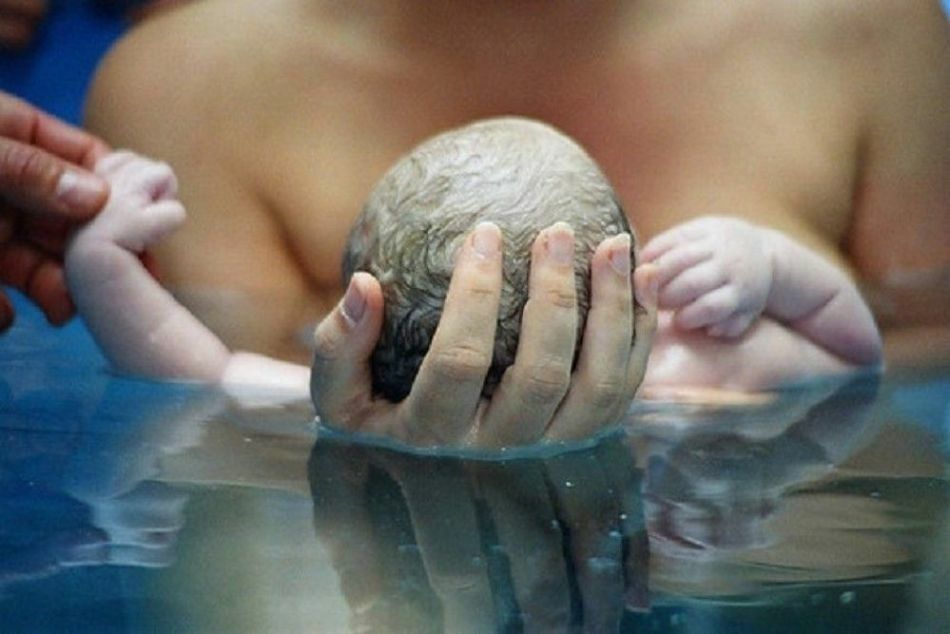 Children born in water are calmer and healthier than children born in the traditional way.
Children born in water are calmer and healthier than children born in the traditional way. Childbirth in the water in the maternity hospital: is it real?
Childbirth in the water in a maternity hospital is real, despite the fact that very few modern clinics provide women with this opportunity.
The delivery room should be equipped not only with water tanks, but also with special monitors and sensors that allow monitoring the status of the parturient and fetus. All ongoing procedures should be as safe as possible, and for emergency cases, a resuscitation unit is provided in the clinic.
IMPORTANT: Delivery in the water should be conducted under the supervision of an experienced physician and midwife who has been pre-trained.
Maternity hospitals, which enable women to give birth in water, usually also have the advantages of:
- individual shower and toilet
- rest room for relatives
- room for postpartum treatment and supervision
- kitchen section
IMPORTANT: When choosing a clinic for delivery, water should be asked if the institution has documents permitting such practices.
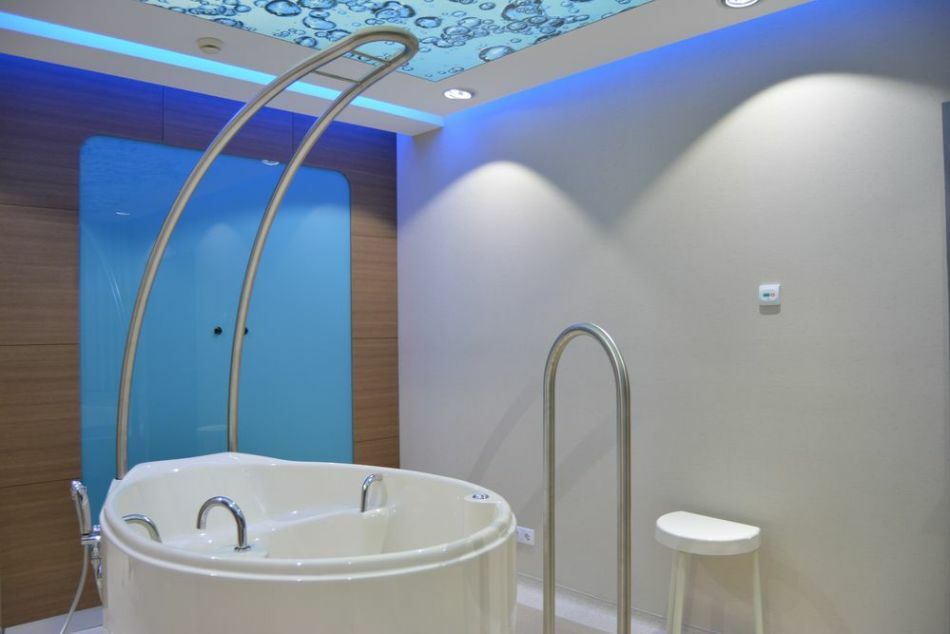 Clinics practicing waterbirth are equipped with all the necessary equipment
Clinics practicing waterbirth are equipped with all the necessary equipment Waterbirth at home: advice and feedback
Katerina, 34, : I planned my third birth at home. Always dreamed of giving birth in the water and, finally, I decided on it. I am sure that both pregnancy and childbirth are absolutely natural processes for a woman. If there are no health problems, then the birth should pass easily and painlessly. I found a midwife in advance, who agreed to help me in my idea. During the entire pregnancy, we called up with her and talked for a long time. She dedicated me to all the subtleties of water supplies, explained what the consequences might be. When the fights began, I sent my husband and my older children for a walk, and she called her assistant. An hour later, she already examined me and made a verdict: "The opening of 9 centimeters."
I spent some time in the room, and when the opening was complete, I moved into the bath, which the midwife had already prepared for me. I was comfortable sitting in the water squatting, across the bathroom. In the water, the midwife opened her bladder and almost immediately after that, attempts began. My son was born with a fifth attempt, I did not feel any pain. The midwife got the baby out of the water not at once, but after he had a little swim. After the midwife dropped the water, I gave birth to the latter. For some time my baby and I were in the tub, then the midwife cut the umbilical cord and took the baby. When I left the bathroom, the baby was already asleep, processed and wrapped in diapers. The husband and children returned home in the evening, just at the moment when I fed our new member of the family with a breast. They were very surprised by my good health, after all, after previous hospital births, I felt much worse.
Adeline, 23 years old : I wanted to give birth in the water, like my girlfriend. My husband and I agreed with the doula, who spent the home birth in the water with a friend. Until a certain moment everything went according to plan, as I imagined. But when the pain became unbearable, I could no longer control myself and was panicked. Water could not save me from this pain or ease it. I remember that I screamed and asked to call a doctor, which greatly frightened both my husband and our assistant. My husband called an ambulance. By her arrival, I was already not aware. My birth in the water at home ended with an emergency cesarean section "on land" in the hospital. The doctors said that we were very lucky. Because of the narrow pelvis, I would not have given birth myself, and everything could end badly. As it turned out, deliveries into the water are not so beautiful, safe and painless, as they describe in fashion magazines.
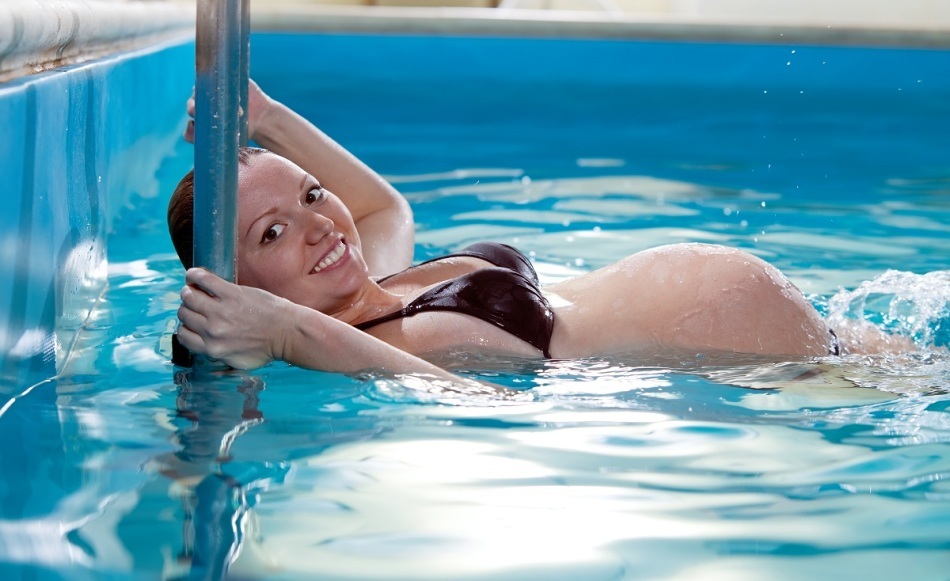 When choosing a birth in water, the woman assumes responsibility for the life and health of the unborn child.
When choosing a birth in water, the woman assumes responsibility for the life and health of the unborn child. . Whichever decision parents adopt, they must remember that official medicine is anti-generic in water because of the high risk of possible complications. The greatest danger awaits the baby, which instead of the first breath can take a sip of water, which is fraught with the development of pneumonia and even death. Going to water birth, the future mother is obliged to listen not only to her heart and body, but also to the voice of reason.
